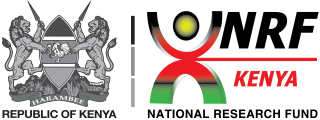Browsing by Author "Mtwapa, 2KALRO - Matuga, 3KALRO - Katumani"
Now showing 1 - 1 of 1
Results Per Page
Sort Options
Publication Effects of cutting frequency on forage production and nutritive value of Brachiaria grass cultivars in coastal lowlands of Keny(CABI Digitral Library, 2020) Mtwapa, 2KALRO - Matuga, 3KALRO - KatumaniFeed shortage during the dry season limits livestock productivity in coastal lowlands of Kenya. A study was conducted to evaluate the effect of cutting frequency on productivity and nutritive value of Brachiaria grass cultivars. Seven (7) Brachiaria grass cultivars: Brachiaria brizantha cvs. Marandu, Xaraes, Piata and MG4, B. decumbens cv. Basilisk, Brachiaria hybrid cv. Mulato II, B. humidicola cv. Llanero were evaluated along Chloris gayana cv. ex-Tozi as a control at Mtwapa and Msabaha in the coastal lowlands of Kenya. Plant numbers, tiller numbers and dry matter (DM) yield were monitored at 6, 8 and 12 weeks intervals in 2014 and 2015 in both long and short rain seasons. At Mtwapa, generally increasing cutting interval from 6 to 8 weeks resulted to increased DM yield but further increase to 12 weeks, the yield either remained the same or declined. At Msabaha, there was no distinct trend on DM yield by increasing cutting interval. Mulato II, Marandu, MG4 and Xaraes had the highest yield in most of the seasons. The crude protein was generally low (5.3 - 7.7% of DM) and was similar among the Brachiaria grass cultivars and also to Rhodes grass and Napier grass. The CP content at 6 and 8 weeks cutting interval was similar (7.12 and 7.24% of DM) and by increasing cutting interval to 12 weeks it declined to 4% of DM. Similarly increasing cutting interval from 6 to 12 weeks resulted to decline in digestibility. Based on high nutritive quality at 8 week cutting interval and relatively high DM; it can be concluded that harvesting Brachiaria at 8 weeks cutting interval is appropriate in coastal lowlands of Kenya.
